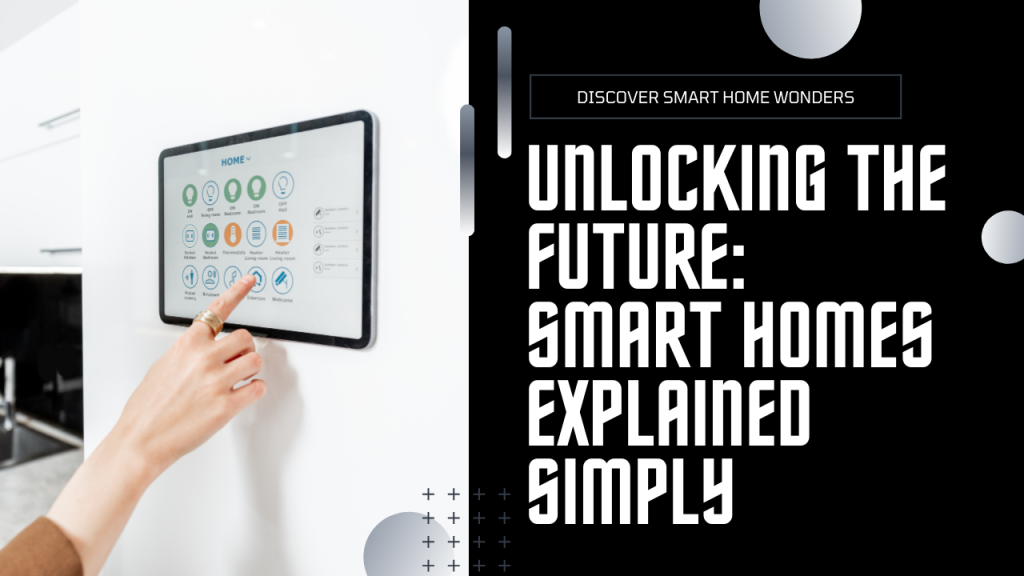Smart homes are no longer just a concept for tech enthusiasts; they are becoming a standard in modern living. From improving energy efficiency to enhancing security, smart home technology is revolutionizing how we interact with our living spaces. Here’s a beginner’s guide to understanding and integrating smart home technology into your life.
**1. What is a Smart Home?
A smart home is equipped with interconnected devices that can be controlled remotely through the internet. These devices are designed to automate and optimize various aspects of home living, including lighting, heating, cooling, and security. By leveraging technologies such as Wi-Fi, Bluetooth, and IoT (Internet of Things), smart homes offer increased convenience and control over your living environment.
**2. Getting Started with Smart Home Devices:
Starting with smart home technology can be as simple as adding a few key devices. Smart bulbs, plugs, and thermostats are user-friendly options that can be installed without major changes to your home. Smart bulbs allow you to adjust lighting remotely and set schedules, while smart plugs enable you to control appliances from your smartphone. These entry-level devices offer a taste of what smart home technology can do and can be expanded upon as you become more comfortable.
**3. Centralizing Control with Smart Hubs:
A smart hub acts as the central control point for all your smart devices. It connects and manages various devices, allowing you to control them through a single interface. Popular smart hubs include Samsung SmartThings, Google Nest Hub, and Amazon Echo. By centralizing control, you can create automated routines and manage your smart home more efficiently.
**4. Smart Home Automation:
Automation is a key feature of smart homes. It involves setting up devices to perform specific actions automatically based on triggers or schedules. For example, you can program your smart thermostat to lower the temperature when you leave for work or set your smart lights to gradually brighten in the morning. Automation enhances convenience and ensures that your home adapts to your daily routines.
**5. Improving Energy Efficiency:
Smart home technology contributes to energy efficiency by optimizing how and when devices are used. Smart thermostats learn your temperature preferences and adjust settings to save energy when you’re not home. Smart lighting systems can reduce energy consumption by turning off lights in unoccupied rooms. These features not only help lower utility bills but also support environmentally friendly living.
**6. Enhancing Home Security:
Smart home technology significantly improves security through various devices. Smart cameras and doorbell cameras provide real-time video feeds and notifications about activity around your home. Smart locks allow you to control access remotely, granting entry to trusted individuals and monitoring who enters and exits. Integrating these security features enhances peace of mind and ensures greater control over your home’s safety.
**7. Voice Assistants and Smart Home Integration:
Voice assistants like Amazon Alexa, Google Assistant, and Apple Siri are central to smart home integration. These platforms allow you to control your devices using voice commands, making interactions more intuitive and hands-free. For example, you can ask your voice assistant to turn off the lights, adjust the thermostat, or play music, simplifying your daily routines.
**8. Future Trends in Smart Home Technology:
The smart home industry is rapidly evolving, with new technologies and innovations emerging regularly. Future trends include advanced AI integration, which will enable devices to better understand and anticipate user preferences. Developments in home automation, energy management, and security are expected to further enhance the smart home experience, making homes even more efficient, convenient, and responsive.
In conclusion, smart home technology is transforming modern living by offering increased convenience, efficiency, and security. By starting with essential devices, centralizing control, and exploring automation, you can integrate smart home features into your daily life. As technology continues to advance, staying informed about future trends will help you make the most of your smart home investment.

